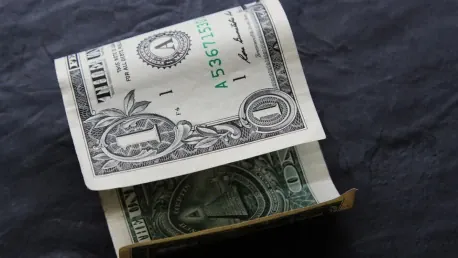In the wake of Donald Trump’s election victory, financial markets have reacted with notable enthusiasm, leading the U.S. dollar to soar to its highest levels in six and a half months. Investor optimism, driven by what has been dubbed as “Trump trades,” centers around the anticipation of sweeping policy changes that Trump pledged to implement during his campaign. These include lower taxes, new trade tariffs, and a host of deregulatory measures, which collectively are expected to stimulate economic growth. However, these measures could also introduce inflationary pressures that may prompt the Federal Reserve to alter its rate-easing policies. The implications for the U.S. dollar and global currencies are significant, with potential reverberations across international financial markets.
The Anticipated Fiscal Policies and Their Possible Effects
The prospect of substantial tax cuts and increased deregulation under a Trump administration has led to speculation about heightened fiscal stimulus. Such measures are expected to invigorate economic activity, driving up demand and potentially stoking inflation. Investors are closely monitoring U.S. economic indicators, particularly the Consumer Price Index (CPI) report, which is anticipated to show a 0.3% rise in the core index for October, matching the previous month’s increase. Analysts posit that any uptick in inflation could bolster the dollar further, as it may lead the Federal Reserve to reconsider its stance on interest rates.
Forecasters such as Mitul Kotecha from Barclays have suggested that should the U.S. economic data continue to reinforce the possibility of Trump’s fiscal policies achieving their goals, the dollar is poised for continued strength. Strategists from financial institutions like UniCredit echo this sentiment, noting that the dollar could see significant gains in response to these fiscal measures. The market’s anticipation of these outcomes reflects broader confidence in Trump’s ability to deliver on promises that could reshape the economic landscape. The ongoing speculation surrounding the actual implementation and efficacy of these policies will be a key factor influencing currency dynamics in the foreseeable future.
International Responses and Currency Movements
While the U.S. dollar has been buoyed by optimism over impending fiscal policies, other major currencies have experienced notable fluctuations due to their respective regional circumstances. The Japanese yen, for instance, has weakened substantially, hitting its lowest level since July. This decline is largely attributed to Japan’s accelerated wholesale inflation, which complicates the Bank of Japan’s decisions regarding rate hikes. The dynamics of Japan’s economy and its monetary policy choices will continue to exert influence on the yen’s performance relative to the dollar.
In Europe, political uncertainties have also played a significant role in currency movements. Germany, facing snap elections following the collapse of Chancellor Olaf Scholz’s coalition government, has contributed to the euro’s struggles. The euro remains near a one-year low, further strained by the possibility of new trade tariffs imposed by Trump against Europe and China. The intertwined effects of political instability and trade policy tensions have created a complex backdrop for the euro, which is likely to experience continued volatility.
Other currencies, such as the British pound, have also felt the impact of regional political and economic pressures. Sterling has dipped toward a three-month low, reflecting the broader sentiment of uncertainty and apprehension within the market. As various regions grapple with their own unique challenges, the interplay of these factors will continue to shape the relative performance of global currencies against the U.S. dollar.
Market Sentiment and Ongoing Speculation
Following Donald Trump’s election victory, financial markets responded with notable enthusiasm, causing the U.S. dollar to surge to its highest levels in six and a half months. Investor optimism, largely driven by the anticipation of policy changes Trump promised during his campaign, dubbed as “Trump trades,” is the catalyst behind this reaction. These expected policy changes include tax reductions, new trade tariffs, and a series of deregulatory measures intended to spur economic growth. While these measures are designed to stimulate the economy, they could also introduce inflationary pressures. Consequently, this may lead the Federal Reserve to reconsider its current rate-easing policies. The ramifications for the U.S. dollar and global currencies are profound, with potential significant effects on international financial markets. Investors and analysts are closely monitoring these developments, understanding that the resultant changes could create a ripple effect, impacting economies worldwide and altering the dynamics of global trade and finance.









